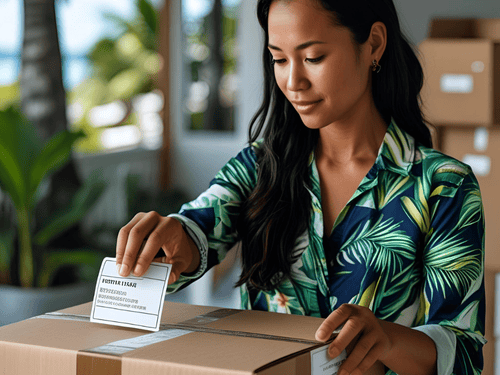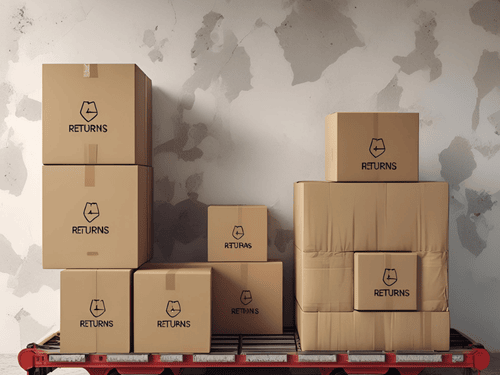E-commerce returns are hitting record highs. Global online sales topped $6.3 trillion in 2023, and return rates in fast-moving categories often exceed 30%. Some seasonal spikes reach 50%. The National Retail Federation reports that $743 billion worth of goods came back to retailers in 2023 alone.
Returns aren’t just about refunds anymore. Smart businesses see them as a chance to recover value and build trust. But handling reverse shipments takes more than processing forward orders. It needs special systems, trained staff, and the right partners.
What Makes Reverse Logistics Complex
When customers return items, several things must happen fast. Teams inspect each product to see if it can go back on shelves. Damaged goods might need repairs or disposal. Data gets captured about why items came back. Inventory systems need updates.
This process costs money upfront but pays off when done right. Companies with strong reverse logistics recover up to 65% of an item’s original value. Those with weak systems only get back 30%. Poor handling hit U.S. retailers for $816 billion in losses during 2022.
Customer experience matters too. About 92% of shoppers will buy again if returns are easy. But 13% abandon carts when they can’t see return options clearly.
Key Strategies for Managing Returns

Make Returns Simple
Clear policies and easy processes keep customers happy. Offer online return portals, prepaid labels, and local drop-off spots. Fast refunds build trust. Research shows 39% of customers expect free returns.
Use Technology
Warehouse management systems automate return approvals and tracking. Scan barcodes when returns arrive to sort items and update inventory instantly. Capture data on return reasons like wrong size or defects. This information helps fix problems before they create more returns.
Create Dedicated Workflows
Set up separate areas for processing returns. Keep them away from outbound shipping to avoid delays. Inspect items right away. Sellable products go back to inventory. Others move to refurbishment or clearance channels.
Think Sustainability
Partner with recyclers and charities instead of throwing away unsellable items. Refurbish products for resale when possible. Patagonia and Apple both run programs that give returned items new life while creating extra revenue streams.
Optimize by Region
International returns involve customs, duties, and local taxes. Regional fulfillment hubs cut transit times and costs. Partners with European fulfillment expertise, like Vareya’s European Fulfillment services, handle VAT adjustments and consolidate shipments across EU markets.
Why 3PL Providers Excel at Returns
Third-party logistics companies transform return headaches into smooth operations. They have the scale and technology to process high volumes with fewer errors. Automated sorting systems and specialized software handle thousands of returns daily.
3PLs pool returns from multiple clients, creating economies of scale. This shared approach lowers costs for everyone. Businesses don’t need their own return centers or trained teams. The 3PL’s expertise does the heavy lifting.
Good 3PLs also handle complex logistics like cross-border paperwork and sustainability compliance. Many run consolidation programs that cut transport miles and emissions. They offer returnless refunds for low-value items and arrange recycling for unsellable goods.
Speed matters most. 3PLs get restocked items back on shelves faster and process refunds quicker. Since 92% of consumers will reorder when returns are easy, this directly helps brand reputation.
Outsourcing reverse logistics lets businesses focus on selling and innovation. 3PLs provide detailed reports on return reasons and costs. This data helps improve products and reduce future returns over time.
Current Trends and Future Outlook

The reverse logistics market is growing fast. Analysts expect it to reach $3.2 trillion by 2032, with annual growth around 13%. DHL estimates it will hit $954 billion by 2029.
Technology drives much of this growth. AI and robotics speed up processing and boost accuracy. Advanced sorting systems handle more volume with better results.
Circular economy practices are becoming standard. Major retailers use return data to improve product design and power secondary markets. Amazon Renewed resells many returns at 50-75% of original prices.
Customers want full transparency too. They expect shipment tracking for returns, instant refunds, and easy exchanges. Fulfillment logistics that deliver this level of service turn a tricky process into positive experiences.
Companies that optimize returns report much better value recovery from returned goods. They also find that smooth return experiences boost customer loyalty. Modern consumers see hassle-free returns as basic good service.
Making Returns Work for Your Business
Handling reverse shipments well matters as much as getting products out the door. Clear policies, automated workflows, and the right 3PL partnership minimize costs while building customer loyalty.
Smart fulfillment logistics process every returned item quickly, accurately, and sustainably. Efficient reverse logistics reduces waste, recovers lost value, and increases satisfaction scores.
Choosing a fulfillment provider that masters reverse shipments turns returns from a cost center into a competitive advantage. When done right, returns become a streamlined part of your supply chain that actually helps your business grow.

